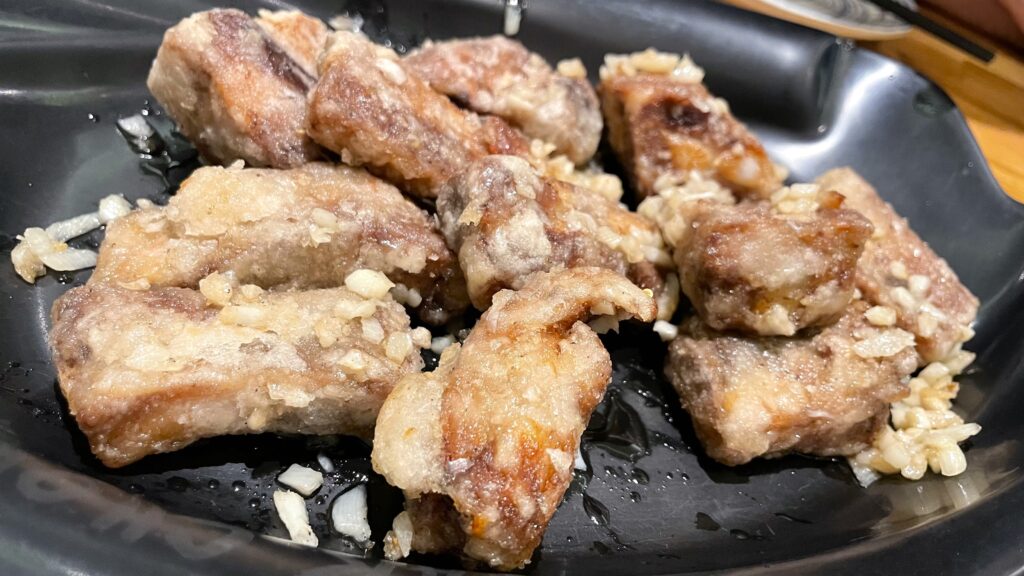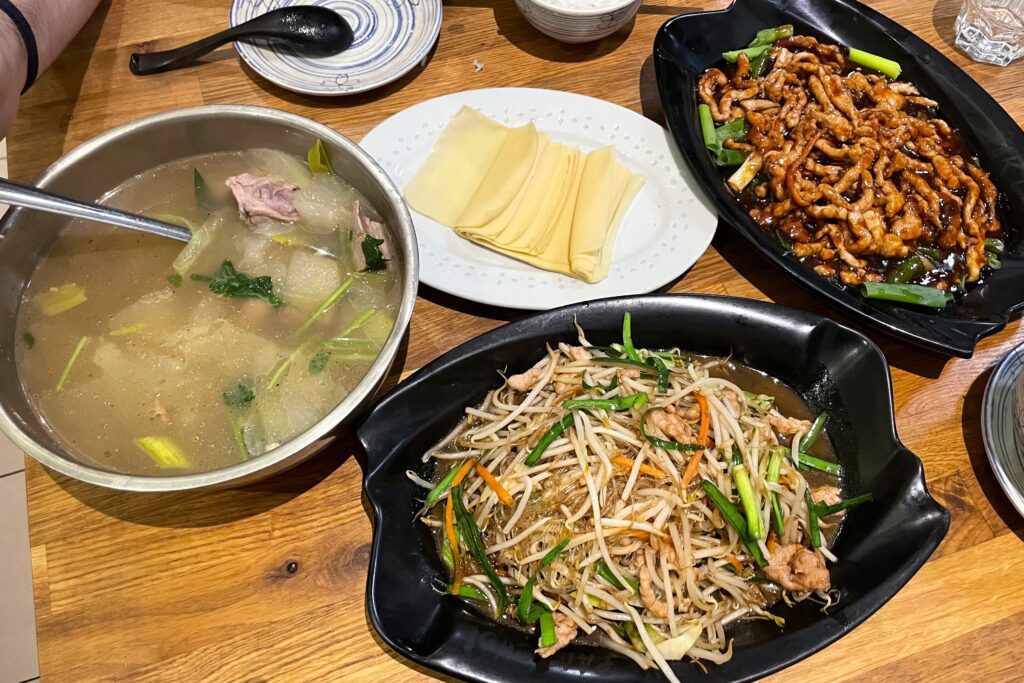Remember Chiking, the Korean fried chicken restaurant we introduced you to a while back? Today we’d like to take you to another culinary gem right next door.
Pak Choi Restaurant offers authentic Chinese cuisine at a reasonable price. The atmosphere is reminiscent of a small street stall in China. Locals, Asians and visitors from all over the world gather here to enjoy delicious Chinese food.
A quick insight into the restaurant’s name: Pak Choi (白菜 – “white cabbage” or 青菜 – “green cabbage”) is a leafy vegetable that is very popular in Asian cuisine. It has dark green leaves and a crisp, light-coloured stalk with a mild, sweet flavour. It is rich in vitamins and minerals, easy to prepare, versatile (steamed, boiled, stir-fried or even raw) and complements other ingredients well. Pak Choi has been a staple of Chinese cuisine for centuries, used in a variety of dishes from soups to stir-fries.
Restaurant Profile
- Name of the Restaurant: Pak Choi
- Adress: Elbestraße 12, 60329 Frankfurt am Main
- Style: Chinese Cuisine
- Price: around 15 – 25 EUR per Person (incl. drinks and tips)
I think the name of the restaurant is fitting, as the versatility of pak choi is reflected in the restaurant’s menu (see here). The Pak Choi doesn’t limit itself to a specific regional Chinese cuisine, but offers a wide range of dishes. There are also plenty of vegetarian options. If you enjoy authentic Asian cuisine but are intimidated by spicy flavours or unfamiliar ingredients (frog legs, offal, seaweed, etc.), this is the place for you.
It’s for these reasons that we’ve visited the Pak Choi restaurant many times and would like to introduce you to a selection of their dishes.
Let’s start with the Fried Spareribs with Garlic (蒜香排骨 or Suan Xiang Pai Gu – “garlic-scented pork ribs”). An unusual but delicious take on spare ribs. Tender, succulent meat with a distinctive garlic flavour.

Tip: The ribs can sometimes be a little salty. It’s a good idea to order something to balance it out, such as green vegetables or a classic portion of rice. This will complement the flavour experience and ensure a well-balanced meal.
Next up is Steamed Seabass with Shallotts and Cilantro (清蒸鱼 or Qīngzhēng Yú – ‘clear or pure steamed fish’). A whole fish is prepared, stuffed with ginger, chilli and fresh coriander, and then steamed. It is a light and healthy dish that brings out the natural flavour of the fish. The slightly salty and sweet sauce (soy, sesame oil, sugar and rice wine) adds an extra dimension of flavour. Sea bass is mild, with tender meat and an even more tender skin. Shallots provide a sweet and savoury touch, while coriander adds a fresh, citrusy flavour. Together with the tender and juicy flesh of the sea bass, they create a harmonious and balanced flavour profile.
Qīngzhēng Yú is an essential part of festive occasions and celebrations in many regions of China, especially during the Chinese New Year. In Chinese culture, fish symbolises wealth and prosperity and expresses the wish for happiness and success in the New Year.

Moving on to the Pork in Soybean Paste with Scallion (酱肉丝 – jiàng ròu sī). Thinly sliced pork is marinated in soybean paste (also known as fermented soybean paste or 黄豆酱 – huángdòu jiàng) and then cooked with spring onions.

It is served with tofu paper or tofu skin (豆腐皮). Place some of the pork, paste and fresh spring onions on top of one of the tofu slices and prepare a small wrap (similar to Peking duck). The flavour of this dish is hearty and rich in umami thanks to the fermented soybean paste. The pork is tender and juicy and the spring onions add a fresh and crunchy flavour.
Now let’s talk about Soy Sprouts with Ramson, Glass Noodles and Stripes of Meat (炒合菜 – Chǎo hé cài). This is a house speciality made from mixed and stir-fried vegetables (Chǎo means ‘stir-fried’ and ‘hé cài’ stands for various vegetables). It’s a well-balanced dish with crunchy bean sprouts, soft glass noodles and savory meat. The ingredients are stir-fried in a pan or wok with a mixture of soy sauce, garlic, ginger and various spices. Chǎo hé cài also comes in a vegetarian version with tofu as the main protein source.

Finally, we’d like to introduce you to the Sparerib Soup with Winter Melon (排骨冬瓜汤 – Pork Ribs (排骨) and Winter Melon (冬瓜)). The winter melon adds a delicate sweetness and refreshing aroma to the mild soup, complemented by the hearty meaty flavor of pork ribs. The soup is seasoned with various spices such as ginger or coriander. This harmonious combination not only makes the soup extremely nutritious and flavourful, but also provides comforting warmth on colder days.






